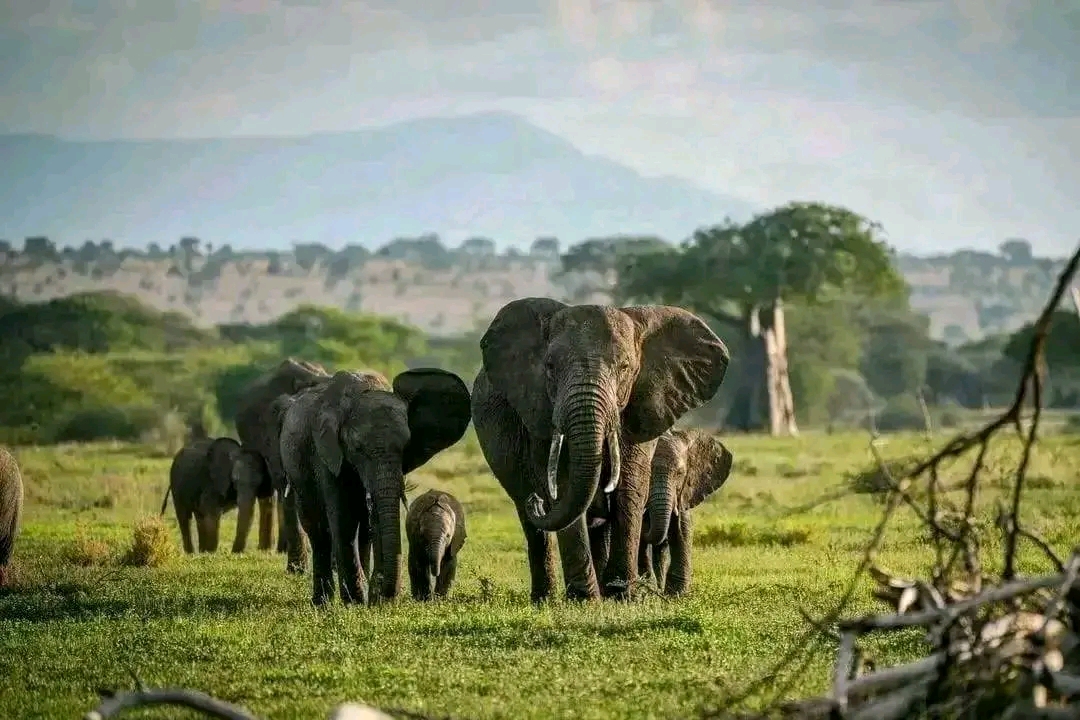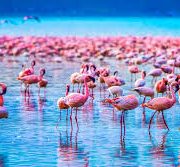
Serengeti National Park – The Crown Jewel of African Safaris
Serengeti National Park, located in northern Tanzania, is one of the most iconic and celebrated wildlife destinations in the world. Covering approximately 14,750 square kilometers (5,700 square miles), the park is a vast expanse of golden savannahs, rolling grasslands, acacia woodlands and rocky outcrops known as kopjes. Serengeti is not just a park it’s a living, breathing ecosystem that offers one of the most spectacular wildlife spectacles on Earth.
🌍 A UNESCO World Heritage Site
Declared a UNESCO World Heritage Site in 1981, Serengeti is world-renowned for its ecological importance and unmatched natural beauty. It is part of the larger Serengeti ecosystem, which includes the Ngorongoro Conservation Area, Maswa Game Reserve and Kenya’s Maasai Mara National Reserve. This seamless ecosystem supports one of the largest and most diverse populations of wildlife found anywhere on the planet.
🐃 The Great Wildebeest Migration – Nature’s Grandest Show
The Serengeti is perhaps most famous for hosting the Great Wildebeest Migration, an annual journey of over 1.5 million wildebeests, 300,000 zebras, and hundreds of thousands of gazelles in search of fresh grazing and water. This epic journey follows a circular path through the Serengeti and into Kenya’s Maasai Mara, crossing rivers filled with crocodiles and facing numerous predators along the way. Visitors can witness different stages of the migration depending on the time of year. From calving season in Ndutu (January–March) to river crossings in Grumeti and Mara (June–September), the migration offers raw, unforgettable wildlife action that is considered one of the Seven Natural Wonders of Africa.
🦁 A Predator’s Playground
The abundance of prey in Serengeti sustains a healthy population of Africa’s most iconic predators. Serengeti is often called “the land of predators” due to its high densities of lions, leopards, cheetahs, and hyenas. Lions are particularly abundant, with over 3,000 individuals recorded, making Serengeti one of the best places in the world to observe them in their natural environment. Leopards are often spotted in the woodlands, while cheetahs prefer the open plains, using their incredible speed to hunt gazelles. Hyenas, too, are a common sight known for their intelligence and complex social structures.
🐘 A Rich Diversity of Wildlife
Beyond the Big Five (lion, leopard, elephant, buffalo, rhino), Serengeti is home to a dazzling variety of animals. Towering giraffes glide across the plains, hippos wallow in muddy pools and herds of elephants move gracefully through the woodlands. Other frequently seen species include warthogs, topis, eland, impalas and baboons. The birdlife in Serengeti is equally impressive, with over 500 species recorded, from majestic eagles and vultures to the striking Secretary bird, flamingos, storks and ostriches. The park is a dream destination for both amateur and professional birdwatchers.
🌄 Breathtaking Landscapes
The beauty of Serengeti goes beyond its wildlife. The landscapes here are legendary endless golden grasslands stretching to the horizon, dotted with lone acacia trees and dramatic kopjes (granite rock formations) where lions often rest. In the early morning, the plains glow in soft golden hues, while evenings are painted with fiery African sunsets. These sweeping vistas are not just scenic they’re vital to the survival of the Serengeti ecosystem. The open terrain allows predators to hunt, prey to spot danger, and travelers to enjoy panoramic game viewing.
🛖 Unique Lodging Options
From luxury tented camps to mid-range lodges and mobile camps that follow the migration, Serengeti offers a wide range of accommodations. Sleeping under canvas while listening to lions roar in the distance or dining under the stars adds to the magic of the experience.
🌱 Conservation and Legacy
Serengeti’s protection is vital for the preservation of global biodiversity. It has served as a model for conservation worldwide and continues to inspire eco-tourism and research. Its preservation is a testament to Tanzania’s commitment to safeguarding its natural heritage.
✨ Conclusion
Visiting Serengeti National Park is more than a safari it’s a journey into the heart of untamed Africa. From witnessing the thunderous hooves of the migration to observing a pride of lions in the golden light, Serengeti offers moments that stir the soul and leave lifelong impressions. Whether you’re a wildlife enthusiast, a photographer, or a traveler seeking awe and wonder, Serengeti is the ultimate safari destination an experience like no other.
📅 Best Time to Visit
The Serengeti offers outstanding wildlife viewing all year round, but the timing of the Great Migration heavily influences visitor patterns:
-
January – March: Calving season in the southern plains; great for seeing newborns and predator action.
-
April – May: Fewer tourists, green landscapes, and good wildlife; some roads may be muddy due to rain.
-
June – October: Peak season with dramatic river crossings; ideal for photography and predator sightings.
-
November – December: The herds return south; scenery is lush, and birdlife is abundant.
Recent Posts
🌿 Lake Manyara National Park – Tanzania’s Hidden Gem of Biodiversity
Guardians of Ancient Traditions – The Hadzabe Tribe of Tanzania
Tarangire National Park – Tanzania’s Timeless Wilderness
All Categories

Thailand





